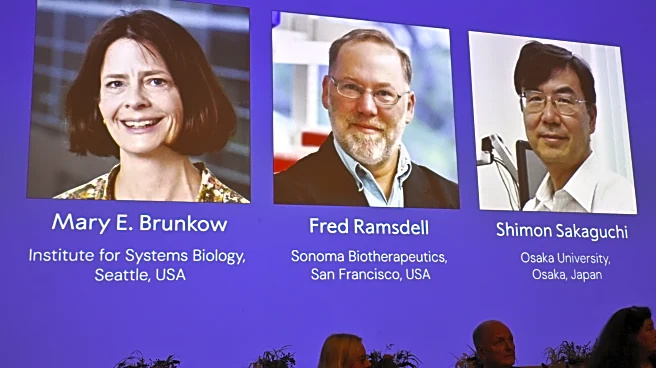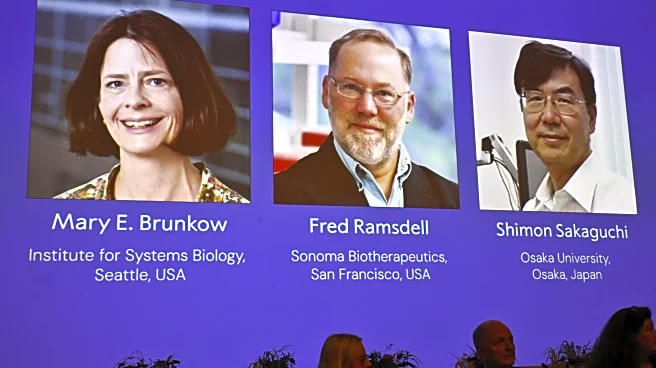What's Happening?
Mary E. Brunkow, Fred Ramsdell, and Shimon Sakaguchi have been awarded the Nobel Prize in Physiology or Medicine for their groundbreaking research on peripheral immune tolerance. Their work has significantly advanced the understanding of how the immune system regulates itself to prevent attacking the body's own cells. The researchers identified regulatory T-cells, which play a crucial role in ensuring that normal T-cells do not mistakenly target healthy cells. This discovery has important implications for medical research, particularly in the fields of cancer, autoimmune diseases, and organ transplantation. The prize, announced at the Karolinska Institutet in Stockholm, Sweden, comes with a monetary award of 11 million Swedish kroner, approximately $1.17 million.
Why It's Important?
The research conducted by Brunkow, Ramsdell, and Sakaguchi addresses a fundamental question in immunology: how the immune system can distinguish between harmful pathogens and the body's own cells. This understanding is critical for developing treatments for autoimmune diseases, where the immune system mistakenly attacks healthy tissue, as seen in conditions like Type 1 diabetes and rheumatoid arthritis. Additionally, their findings could lead to improved strategies for organ transplantation by reducing the risk of rejection. The work on regulatory T-cells opens new avenues for therapeutic interventions, potentially leading to innovative treatments that enhance immune tolerance and improve patient outcomes.
What's Next?
The scientific community is expected to build on these findings to develop new therapies that harness the power of regulatory T-cells. Researchers and biotech companies are exploring ways to increase the production of these cells to prevent organ rejection and treat autoimmune diseases. While the research is still in its early stages, the potential for clinical applications is significant. Future studies will likely focus on translating this basic scientific knowledge into practical medical treatments, with ongoing efforts to refine and test these approaches in clinical settings.











